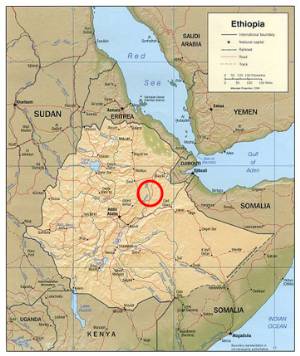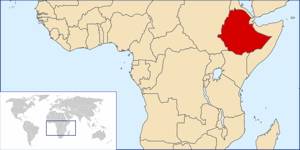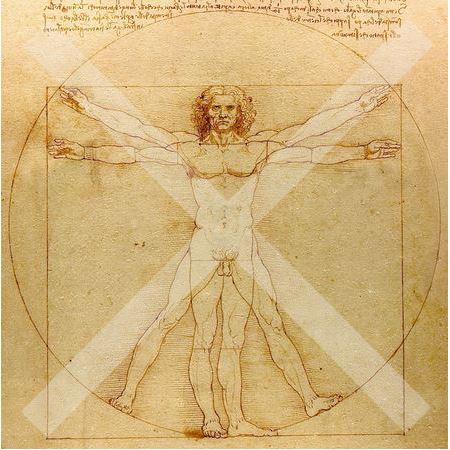Australopithecus garhi
Online Biology Dictionary
|
|
EUGENE M. MCCARTHY, PHD
| < | Timeline | Chart | > |

|
|
Tim White |

|
|
Australopithecus garhi was found in Ethiopia (red circle marks locale) |

|
|
Location of Ethiopia Credit: Rei-Artur |
This hominid is based on a set of cranial fragments (portions of the frontal bone, parietals, and a maxillary bone with teeth) from a single individual (type specimen: BOU-VP-12/130). It was first named in April 1999 (Asfaw et al. 1999). The fossils were discovered in 1996 by an expedition led by Tim White, of the University of California, Berkeley, and Berhane Asfaw, an Ethiopian paleontologist.
The skull differs from those of earlier australopithecines in certain features, particularly with respect the large size of its teeth, especially the molars and premolars. Such robust grinding equipment suggests a diet including tough, fibrous foods. VIEW THE CRANIUM
The cranial capacity of this hominid — brain size was estimated on the basis of a partial reconstruction of the cranium — was about 450 cc (Groves 1999), about the same as that of a chimpanzee.
Skeletal remains found near the skull may be from the same individual. They exhibit apelike proportions with respect to the humeroulnar ratio, but the humerus/femur ratio is humanlike (Culotta 1999, Groves 1999). However, since the postcranial material cannot be definitely attributed to gahri, the height of this hominid is unknown. Nor is it known whether this hominid was bipedal.
The fossils, dating to approximately 2.5 mya, are from the Hatayae Member of the Bouri Formation, in Ethiopia's Awash Valley (see map). They date to the period of the earliest known stone tools, and the remains of Australopithecus gahri are associated with antelope bones with marks that appear to be from stone tools. Primitive stone tools were found at the nearby, contemporaneous site of Gona, but not at Bouri itself (de Heinzelin et. al. 1999, Groves 1999, Semaw et al. 1997). This hominid predates the earliest known use of fire.
The validity of Australopithecus garhi as a type distinct from its contemporary, the much better characterized Australopithecus afarensis, is still controversial. Though its name, garhi, meaning "surprise," suggests it was a remarkable find, it will be far more surprising if Australopithecus garhi survives as a separate, recognized taxon. The fossil material on which it is based will, however, retain its significance even if it is not in the end judged distinct, since it comes from East Africa at a time when there are relatively few hominid fossils known.
Perhaps we are not from the apes alone?

|
|
Habitat: Savanna?
Etymology: The name of this hominid is constructed from the Latin prefix australo-, the Greek suffix |
Interesting facts about other members of genus Homo:
Australopithecus bahrelghazali >>
Australopithecus garhi
© Macroevolution.net
Most shared on Macroevolution.net:
Human Origins: Are we hybrids?
On the Origins of New Forms of Life
Mammalian Hybrids
Cat-rabbit Hybrids: Fact or fiction?
Famous Biologists
Dog-cow Hybrids
Georges Cuvier: A Biography
Prothero: A Rebuttal
Branches of Biology
Dog-fox Hybrids